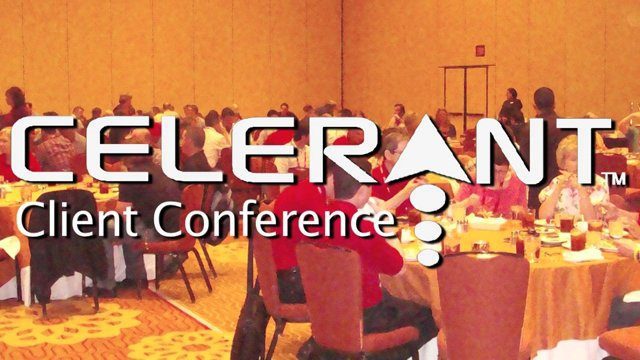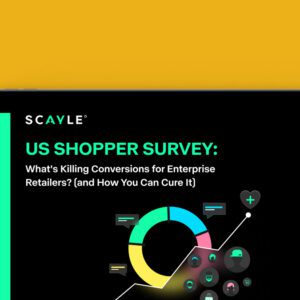When it comes to managing the e-Commerce site, CRM, distribution, the POS or any data security measures, SMBs have more of a hurdle to clear than their larger counterparts. In many cases, these smaller organizations have to enlist an all-in-one solution specifically designed to handle the numerous tasks that bigger companies have the resources to handle separately.
To educate these SMB retail clients on relevant industry topics and update them on the current retail management platforms, Celerant Technology held its 11th Annual Client Conference on April 22 to 24, 2015, in New York City. Recurring topics discussed throughout the event included the shift to EMV-enabled cards, store fulfillment, inventory management and mobile POS.
The EMV topic especially came to the forefront of the conference as SMBs, including many Celerant clients, continue to work to update their card reading systems before the October 2015 liability shift deadline. Ian Goldman, CEO of Celerant Technology, noted that the industry has been under a constant state of uncertainty, especially with many small businesses generally not having the resources or the education to make the conversion on their own.
Advertisement
“From the retail perspective, the perception amongst those I have worked with has been ambivalence,” Goldman said. “Part of it is just lack of knowledge. There’s no clear statement involving the necessary protocol or devices, or a list of 10 steps to being EMV ready. In something this massive, there’s usually a step program that walks you through the process, put together by the top analyst in the field is, and that’s just not the case here. From a lack of communication, confidence and education, I don’t blame them for feeling that way.”
Schuylkill Valley Sports, a sporting goods chain and Celerant client, is an SMB retailer that successfully made the conversion to EMV by transitioning to the OpenEdge payment processing solution in all stores. The retailer also replaced all prior equipment with DynaPro EMV-enabled smart card readers, which feature point-to-point encryption and tokenization.
“Tokenization is one of the big things we were looking for in a new solution,” said Nick Rhoads, IT Manager at Schuylkill Valley Sports. “We wanted to move all of our credit card information off our servers. The best thing for us is that once we get that information off of there, it’s a lot easier to us to maintain PCI compliance. In the event of a breach, we don’t have anything that can really be taken.”
The retailer wanted to get a jump on the third-party hardware and software updates to have everything set by the time Celerant deploys its latest retail management software, Command Retail v6.4.5. While the EMV deadline is fresh on the minds of employees at Schuylkill Valley, the retailer would prefer to meet its own deadline due to the 2015 holiday season, according to Rhoads.
“Celerant initially proposed that we move to the DynaPro solution and OpenEdge, and we tested it out in three stores for a couple of months, making sure that we could get the information we wanted from the processor and work through any hardware issues and software upgrades,” Rhoads said in an interview with Retail TouchPoints. “After that test, we deployed them to all our stores. It didn’t change any process at the POS, so there was no retraining of our employees at the POS. The only difference they saw was that we switched out the credit card terminal.”
While SMBs such as Schuylkill Valley Sports are rushing to make a full conversion prior to the EMV deadline in the midst of uncertainty, they do have a specific advantage over top tier retailers when it comes to securing against future data breaches, according to Goldman. While larger retailers have dozens, if not hundreds, of stores to monitor as well as a bevy of bureaucratic processes to go through, SMBs can attack their problem on a smaller scale.
“The little retailers may see themselves as having a better shot of being able to button things down because there’s less to button down,” Goldman stated in an interview with Retail TouchPoints. “If you only have one door in your house, you only have one lock. If you have to secure an entire building, you have a lot of work. It just depends on how you want to perceive it. I think the smaller retailer feels empowered, because it feels very in control over their whole operation.”
Recommendations For Best Store Fulfillment
Throughout the conference, Celerant team members hosted classroom-style training sessions, open discussion breakout sessions, as well as hands-on interactive workshops designed for users seeking to learn how to best utilize the Celerant software.
For example, a training session discussed best practices for store fulfillment, and showcased the Best Store Fulfillment module of the Command Retail solution. The module is designed to enable retailers to treat individual stores as warehouses and automatically choose the best shipping route for the product based on numerous variables such as location distance, costs and quantity-on-hand.
“If you have 15 to 20 stores, you don’t want to bombard just one store with too much fulfillment for the web site, because that could create negative sentiment in which other store managers ask why they aren’t doing that for their stores,” said Zeke Hamdani, Director of Web Services at Celerant Technology. “If you are fulfilling from stores, you have to pretty much incentivize the employees so that they are motivated to do it.”
While the solution is built to potentially reduce labor expenses, turnaround time and shipping costs, it can be utilized to adapt to numerous retail inventory decisions, so that merchants looking to ship from either the store or the warehouse can automate their logistics system from numerous venues.
“Another big factor, in my opinion, is that if you’re fulfilling from store, then you’re first choice should be to fulfill the entire order from one store, so you only get charged shipping once,” Hamdani explained in the session. “Even if you’re selling a product and the one store has a lot of it, but doesn’t have the second product in stock, you don’t want to split the order unless you absolutely need to.”














